Your outboard may be stalling for several reasons. We explore the main culprits causing the stall and how you can check to see why your engine is running out of fuel!
Why does my outboard stall? Your outboard may be stalling & running out of fuel due to three issues. Either the lift pump has failed, the boat is out of fuel or there is an air leak or blockage somewhere in the fuel lines running fuel from the tank to the engine.
There are several methods to troubleshooting a stalling outboard engine. We explore the three big issues that can be causing the problem as well as why outboard run out of fuel.
Why Does My Boat Keep Stalling?
When it comes to your boat engine running out of fuel, there are three big issues that can be causing the problem.
Either the engine’s lift pump has failed, the boat is out of fuel. Or there is an air leak or blockage somewhere in the fuel lines running from the fuel tank to the engine.
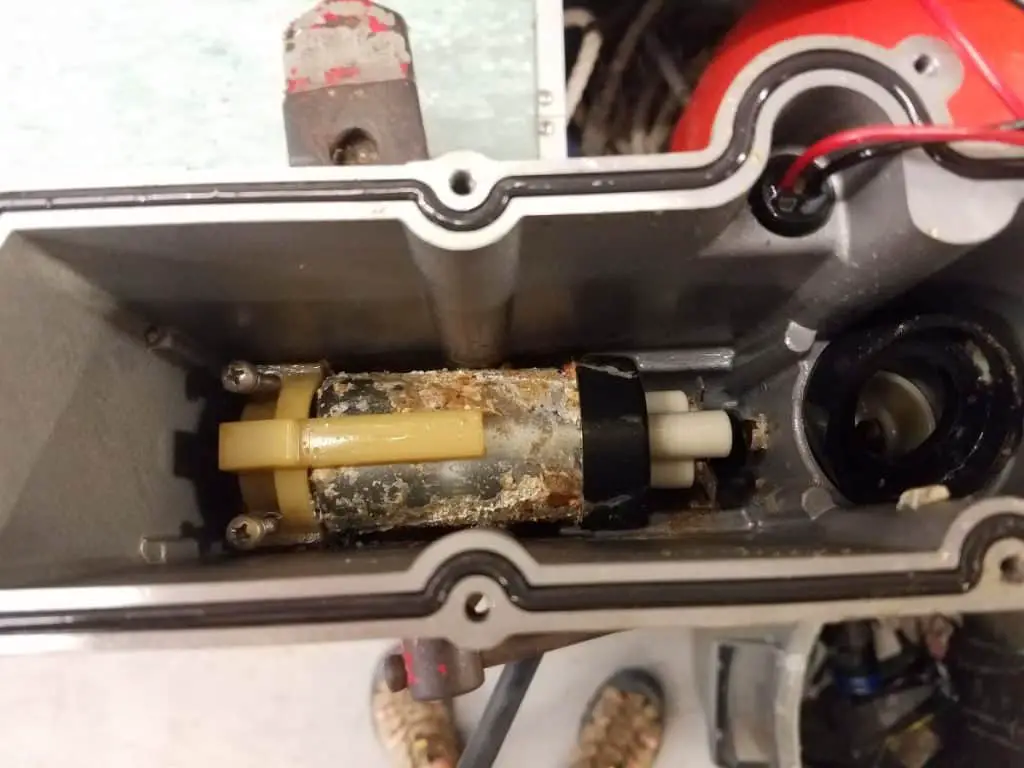
It’s important to remember that there are many different types of lift pumps. (Or low-pressure fuel pumps).
Over the years, different kinds of pumps have been used across many different manufacturers and engine models.
Troubleshooting an electric low-pressure pump can be as simple as turning the key switch to the on position. And then listening to hear if the pump turns on and activates.
If you don’t hear anything, check to see if the fuse is blown.
If the fuse isn’t blown. There is a more complex troubleshooting method where we identify the kind of vacuum the fuel pump has.
At this point in troubleshooting though. We can even pull the pump off of the engine to bench test it!
Fortunately, the other style of pumps are mechanical fuel pumps. And they are a little easier to work with.
For these pumps, you can simply pull the fuel hose off of the output side. And start the engine to see if the pump is moving fuel.
Mechanical fuel pumps are usually operated by either a diaphragm or crankcase pressure or an arm and a lobe on the camshaft.
For more information on lift pumps, FSM’s, or VST’s and this issue. Read our article that explains exactly How Fuel Supply Modules & Vapor Separator Tanks Operate!
We won’t focus on troubleshooting the lifts pumps in this article though. Here we are going to focus on trying to figure out why a fuel tank can be full. Have a properly operating lift pump. And still, experience an engine running out of fuel.
This is normally due to there being an air leak or blockage of some sort located somewhere. Between the pickup tube that is in the fuel tank, to the engine lift pump.
What Causes a Boat Motor to Lose Power?
Your motor could be losing power due to this issue as well.
First, we’ll begin troubleshooting the air leak by using a piece of clear ⅜ inch hose.
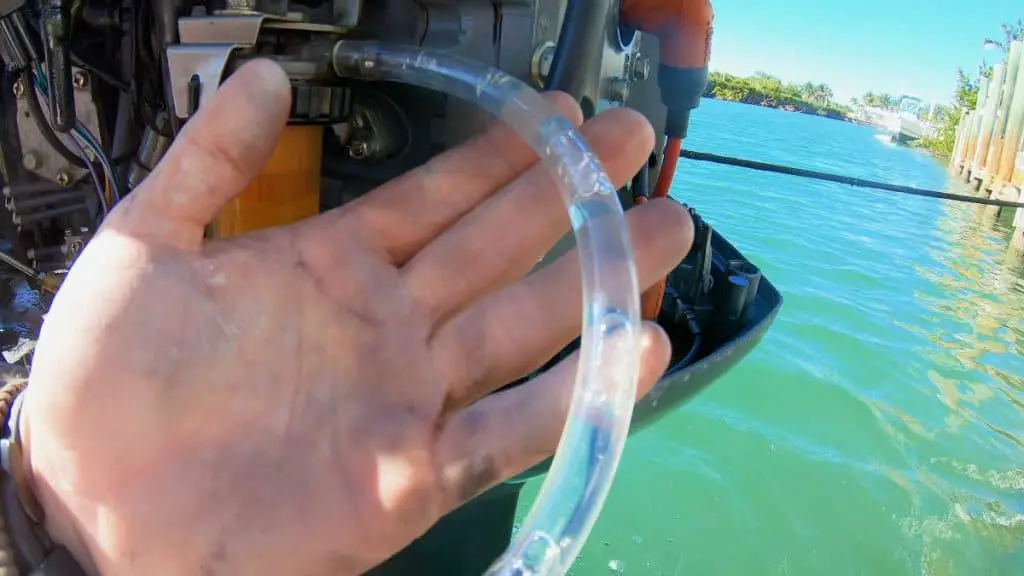
What we’ll do is simply connect the hose inline on the engine where the fuel line runs into the engine. Coming from the fuel line from the fuel tank.
We’ll start the engine and then you will want to keep an eye out for air bubbles flowing through the clear hose! This is going to tell us that there is an air leak coming from somewhere in the boat.
Then, we will move from the engine towards the fuel tank. Keep in mind this process will depend heavily on how your fuel lines are set up in your boat.
Most boats’ fuel pickup systems have these components in them:
You have the fuel tank pickup in the tank. This leads to a hose barb that feeds the fuel to one of two places.
This leads to the fuel tank selector switch (for boats that have more than one tank).
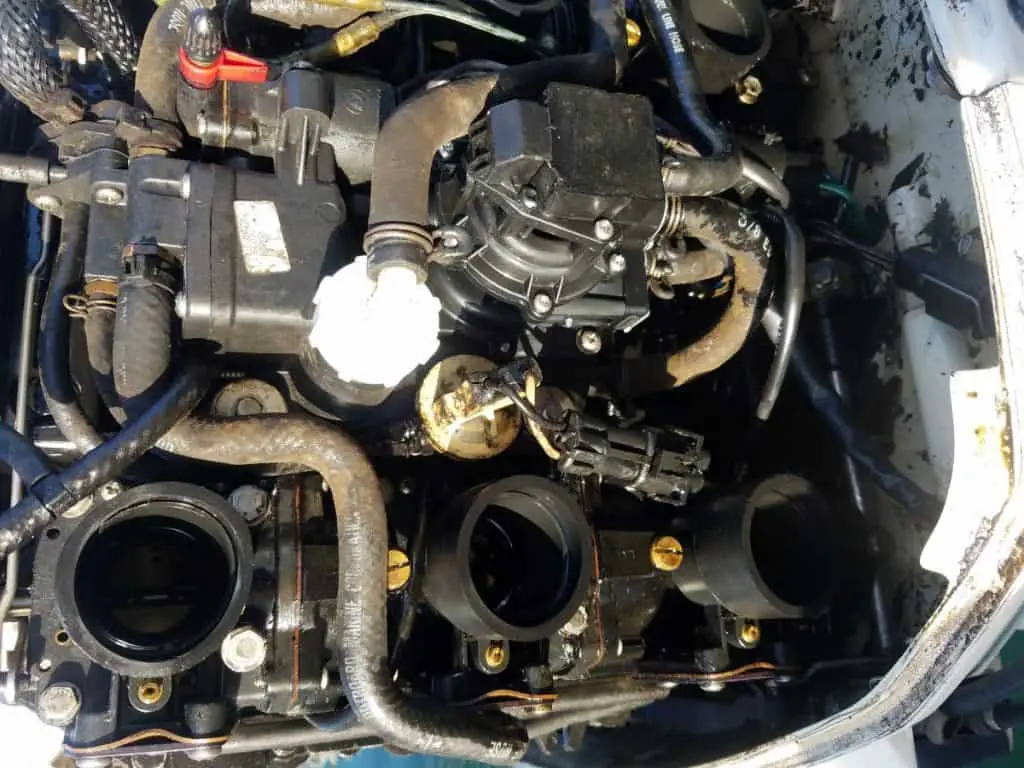
Or, if your boat doesn’t have a selector switch, it should lead to a fuel water separator.
Once the fuel passes through the water separator, it then comes out the other side into a primer bulb or straight to the engine. This is exactly where we started!
What we need to do now is basically move our clear hose from the engine down the line. We want to test in front of each of these different components.
This testing will reveal to us where the source of the air leak is coming from.
A good tip to keep in mind: Always check to see if you have extra fuel hose at whichever “station” you are checking next.
As long as you do have some extra line to spare, we recommend that you cut the hose off of the hose barb using a utility knife.
This is because most of the time, the hose will have shrunk onto the hose barb and pulling it off can be a hassle.
Cutting the tip-off of the connecting hose will make things easier for you!
Boat Stalling Under Load?
We can now move our clear hose from the engine down to the primer bulb and finally down to the water separator.
Just remember: your boat may have these components in a different order.
The most common source for an air leak is the water separator. Water separators get dirty and can create a bad restriction in the fuel system. Causing the stall under load.
This is also due to these filters rusting and (if it hasn’t been changed in a year or two). This generates a hole in the bottom of it & leaks fuel into the bilge. This, in turn, doesn’t allow the system to prime up.
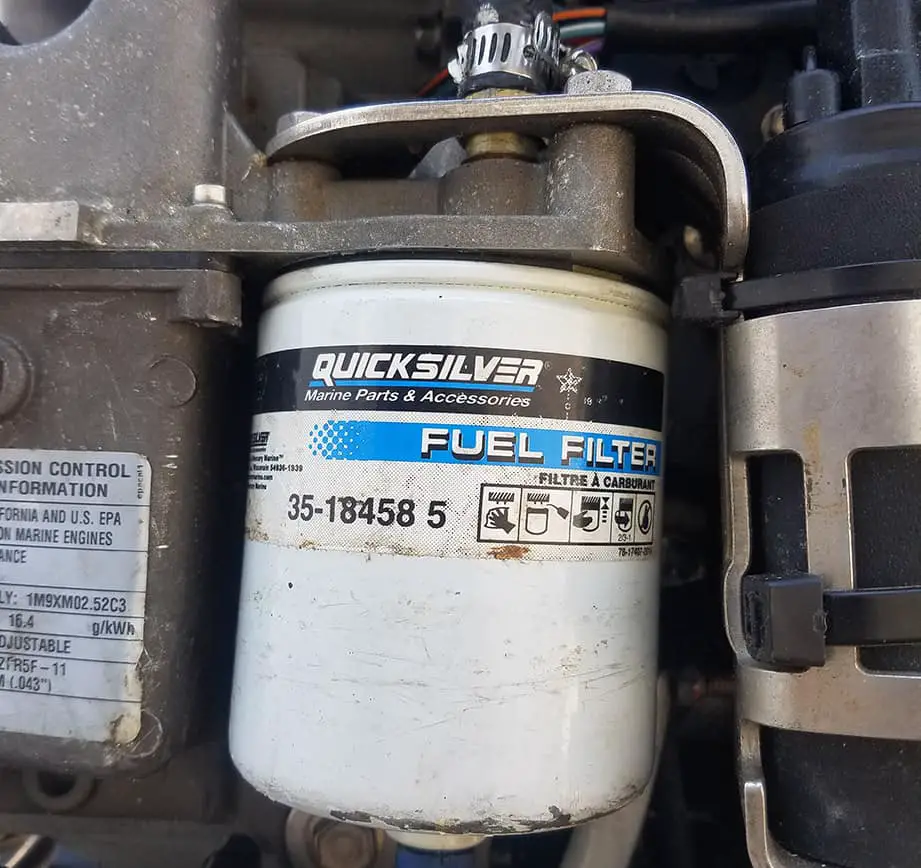
In the event where the water separator or bracket isn’t the issue. We’ll move straight to the fuel tank pick up and see what’s going on there.
Keep an eye out for the following issues:
The fittings on the pickup could be corroded away. The fuel tank pickup itself could also be corroded, or even broken.
Boat Engine Stalls When Accelerating
If your boat engine continues to stall, we still need to cover the blockages issue.
Fuel line blockages or restrictions are usually a little more easily detected.
If you have a strong lift pump and primer bulb, you’ll notice that the lift pump will suck the primer bulb flat. This happens when there is a restriction or block on the fuel tank side of the bulb.
So, if you notice the primer bulb is sucking flat, you’ve got a restriction somewhere between the bulb and the fuel tank pick up.
There is another stalling issue when it comes to shifting, but we have another article that completely covers that topic here:
Why Does My Outboard Engine Stall When I Put It In Gear?
The two most common sources for restrictions are going to be the anti-siphon valve and the bottom of the fuel tank pick up.
To provide you with some clarity, for over a decade now, most outboard boats do not come with anti-siphon valves.
These valves are usually found on older boats built a few years back. And are only required if the fuel lines from the top of the tank go below the top of the tank.
Nowadays, most manufacturers use shut-off valves on the water separators and have the lines above the top of the tank. This has eliminated the need for anti-siphon valves.
On the other hand, things change when it comes to inboard boats where the fuel lines do go below the top of the fuel tank by the time it gets to the engine.
To my understanding, these anti-siphoning valves are still required or some sort of shut off valves or system has to be used for I/O’s.
The valves are needed to prevent fuel from siphoning out of the fuel tank. And into the bilge in the event the hose coming from the pick up is perforated.
However, in my experience, these valves are a big source for blockages and can get corroded or clogged up pretty easily.
The second most common location for blockages is going to be on the bottom of the fuel tank pick up.
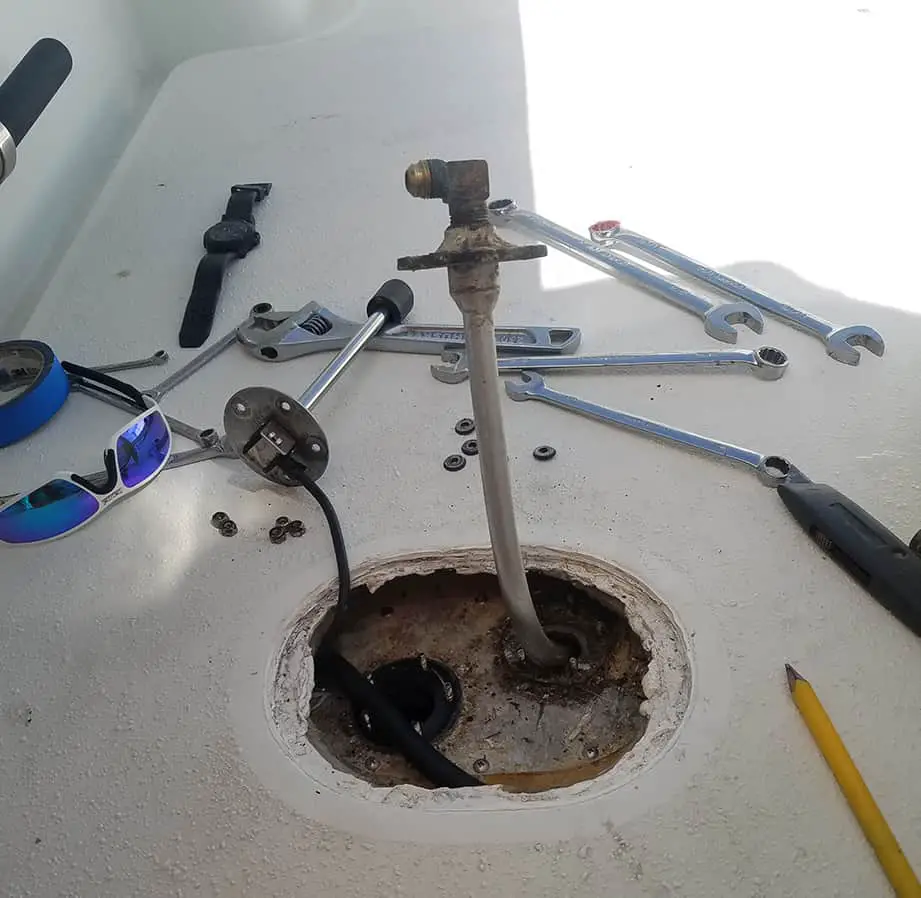
More often than not, fuel tank pickups will have screens on them. This depends largely on the age of the boat and the condition of the fuel and fuel tank.
This pick-up screen can get clogged and creates a blockage. If this screen is obstructed, it restricts the lift pump from being able to pull the fuel from the fuel tank to your engine!
Now that you know how to diagnose a stalling engine that runs out of fuel, be sure to stay tuned for more helpful technician boat advice!
Check Us Out!
Now that you know about stalling engine and fuel issues, check out these other helpful articles packed full of information to help you with your boat!
If you’ve got any questions or comments, let us know by subscribing to our YouTube Channel!
And if you would like to support us to continue bringing you great content, please click the link below to Amazon where we get a commission from anything you are already going to buy!
Click Here To Amazon!
And you can also donate by clicking the donate button here or on the right hand of the screen!
It really helps us out and we thank you so much for your support!
Thanks for reading and we look forward to reading your responses and comments.
